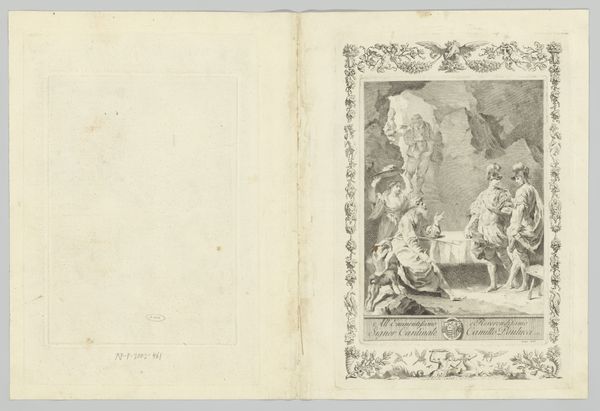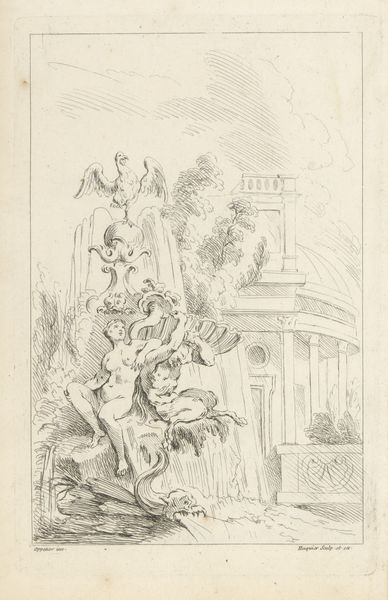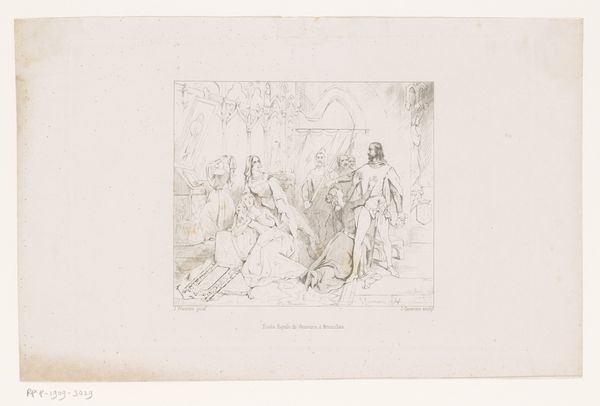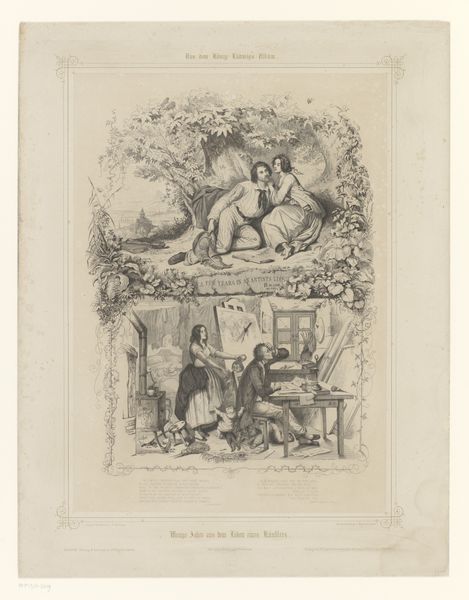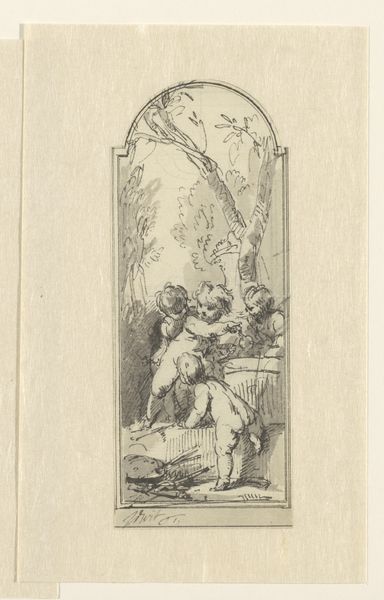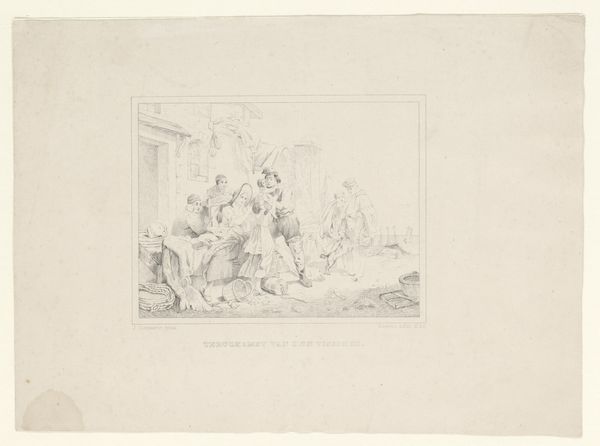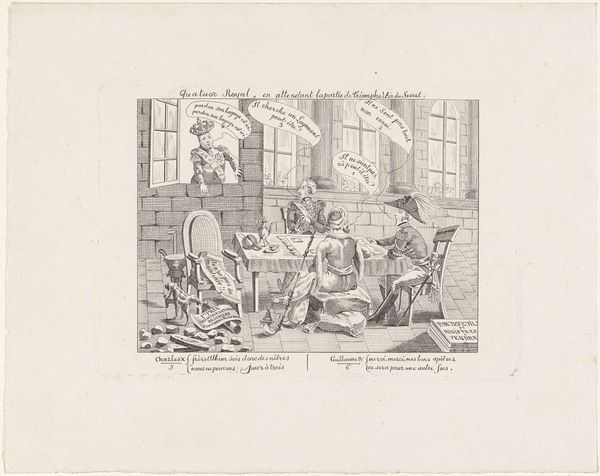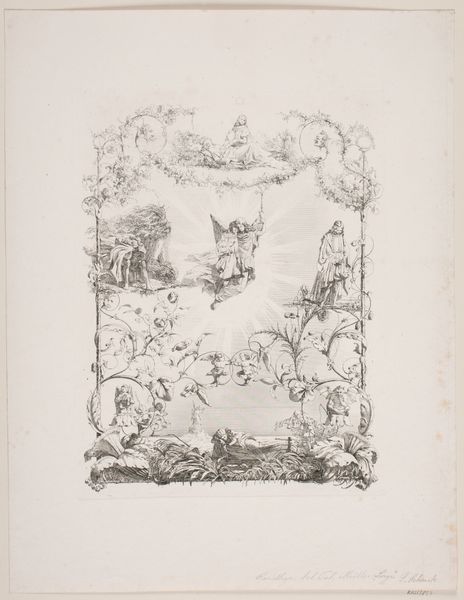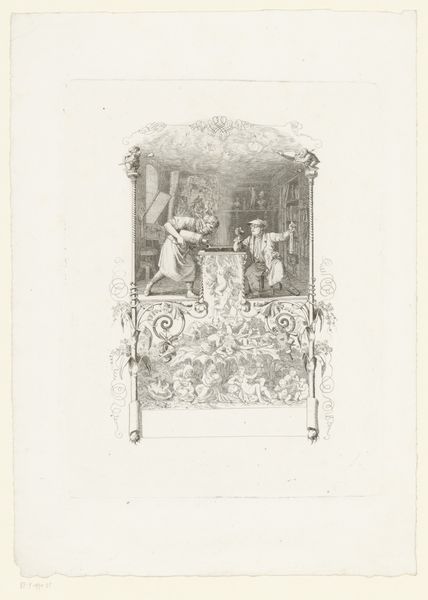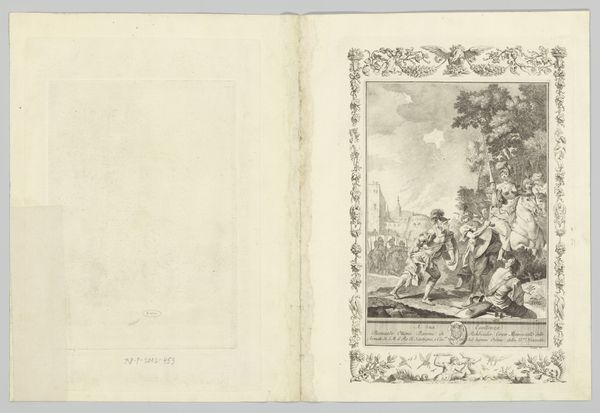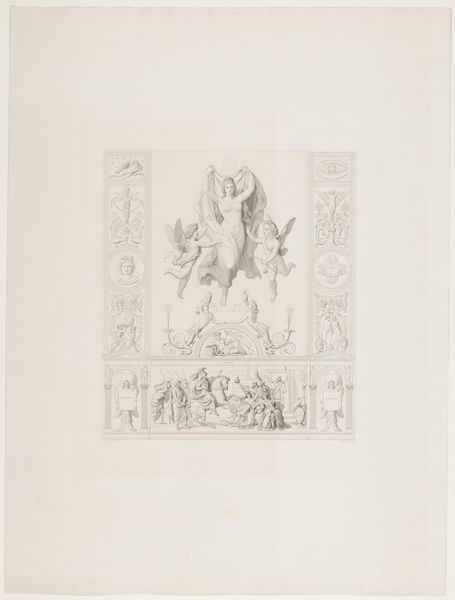
Dimensions: height 326 mm, width 400 mm
Copyright: Rijks Museum: Open Domain
Curator: This is a print titled "Titelprent met portret van Andrea Mantegna en putti," created in 1776 by Giovanni David. It's currently held in the Rijksmuseum. Editor: It's a fascinating piece. My first impression is one of lightness and ethereal quality; the figures, rendered in delicate lines, seem to float across the page. The composition strikes me as quite Baroque, juxtaposed with neoclassical elements in the architecture. Curator: Yes, Giovanni David worked during a time of shifting aesthetic ideals. He clearly draws inspiration from both the Baroque and Neoclassical styles. The image commemorates Andrea Mantegna, but it does so within the visual language of the late 18th century, a period when printmaking served significant cultural and political purposes. Prints such as these served to disseminate artistic ideas and promote particular cultural heroes. Editor: The lines are delicate, almost like whispers on paper, guiding the eye through vignettes that feel allegorical in nature, with the cherubic putti that animate the scene. There is clearly a hierarchy within the composition, which guides my understanding. How did the intended audience perceive the composition? Curator: Well, such a print had a distinct function. This image probably functioned as a frontispiece, acting as a visual preface, bestowing prestige and authority to the work. We must remember the social context of printmaking—this engraving could reach a wider audience, shaping public perception of artists like Mantegna and associating them with Neoclassical values and enlightenment ideals. Editor: Looking closer, the contrast between the architectural precision on the left and the organic fluidity of the figures creates an interesting tension. Note how the use of empty space is a dynamic compositional tool for directing visual motion within the image. It strikes me that David used light to separate planes and further enhance focal points. Curator: Exactly, Giovanni David was employing visual tools to convey cultural meaning. He presented art as something sanctioned by both classical tradition and the Enlightenment present. Editor: It really makes you appreciate the complexity and intention embedded within even a seemingly simple print. I will walk away now looking for contrasts, light, and negative space in artwork. Curator: Agreed; looking at it from this perspective reveals how deeply ingrained societal values are within even seemingly decorative pieces like this one.
Comments
No comments
Be the first to comment and join the conversation on the ultimate creative platform.
